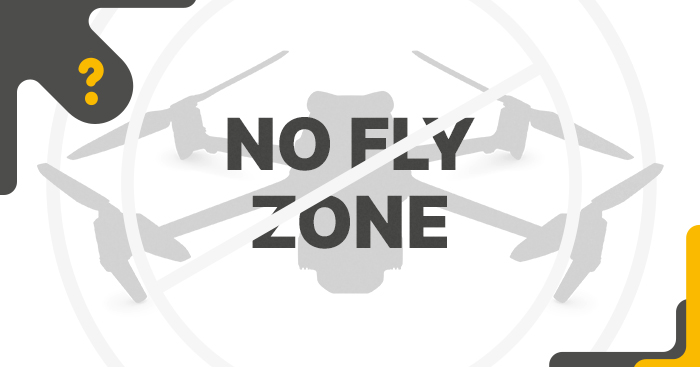No more GEO No Fly Zone in DJI. What you need to know?

DJI amends its policy on GEO No Fly Zones. No more automatic blocking of flights in GEO No Fly Zones. This means more freedom for operators, but at the same time more responsibility. What exactly is changing, where to check the current flight zones, and how it will affect users? Here's everything you need to know.
GEO No Fly Zones - what they actually are?

If you've ever tried to take to the air with your drone and were suddenly met with a no-fly message, it was most likely the result of the GEO No Fly Zone system.
GEO (Geospatial Environment Online) is a geofencing technology built into drones DJI, which connects to GPS and automatically blocks flights in areas deemed sensitive. No Fly Zone is, in turn, translated from English - zones in which flying a drone is prohibited. The goal of this system was to reduce the risk of drones flying into spaces such as:
- Airports - To avoid dangerous air traffic incidents.
- Government and military facilities - for obvious security reasons.
- Power plants and critical infrastructure - to protect key energy facilities.
- Stadiums and major events - to ensure public safety.
The introduction of the No Fly Zone system in Poland took place in 2019. Since then, drone pilots have faced automatic blocking of flights in certain areas, and unblocking has required time-consuming procedures.
What were the previous levels of restrictions?
- Restricted Zones (red) - total flight ban. Unblocking required submitting the form to DJI and waiting for approval (sometimes as long as 24 hours).
- Authorization Zones - Authorization Zones (blue) - required identity confirmation via SMS or bank card.
The system had one main task - minimize the risk of unauthorized flights in places that could pose a threat. The problem is that, in practice, the zones DJI often did not coincide with actual aviation regulations, leading to frustration among drone operators.
DJI abandons No Fly Zone blockades - what's changing?
As of January 2025, DJI officially abolishes automatic flight interlocks in geofencing zones! This means that drones will no longer be automatically blocked, and users will not have to go through complicated procedures to unlock zones.
Instead of earlier No Fly Zones, DJI introduces Enhanced Warning Zones. What it means?
- Drone will not be blocked - Instead, the user will receive a warning that he or she is in a restricted area.
- Full responsibility falls on the operator - it is the drone pilot who needs to know where he or she can fly and what regulations apply in a given country.
- System adapts to global regulations - This change is in line with the direction in which the European Union and the United States are moving, shifting the compliance obligation from the manufacturer to the operator.
DJI informs: The new rules are in line with regulations introduced in Europe and the United States. The responsibility for complying with airspace regulations no longer lies with the drone manufacturer, but with the drone operator. He is the one who must ensure that the flight complies with the applicable law and independently verify that he can fly in a given place.
This approach is more in line with real aviation regulations - from the beginning, the pilot, not the software, should be responsible for complying with regulations.
What this change means for drone pilots?
As with any change, this one also evokes mixed reactions. What operators gain?
- More freedom - The lack of blockades means the end of tedious waiting for the zone to be unblocked when formally the flight is permitted.
- Greater compliance with actual regulations - DJI removes restrictions that did not always reflect country regulations.
- No more bureaucratic procedures - Less redundant paperwork means smoother flight operations.
What about the potential risks?
- Greater responsibility - The lack of interlocks means that pilots must independently verify that the flight is legal.
- Potential for abuse - although most operators act responsibly, there is always a risk that less informed users will try to fly in dangerous areas.
How to check where you can fly a drone?
No interlocks doesn't mean you can fly where you want! Drone operator still required to comply with aviation regulations.
- You can find an international map of the zones DJI here - link
- In Poland, you can check the current zones in the DroneTower app - remember that before the flight, this is where you have to do the check-in.
For more information on current regulations, see our article: Geographic zones for drones.
How to remove No Fly Zone in a drone?
If your drone is still blocking flights in zones, it most likely needs a software update. You'll find the Update option when you launch the DJI Fly application. If you need help, read our guide: How to update DJI Fly app?
Summary
Changes in policy DJI mean an end to automatic flight blockages, but also more responsibility on the part of the operator. The new approach DJI is in line with global regulations, which means drone users need to be more aware of regulations and take care of the legality of their flights themselves.
